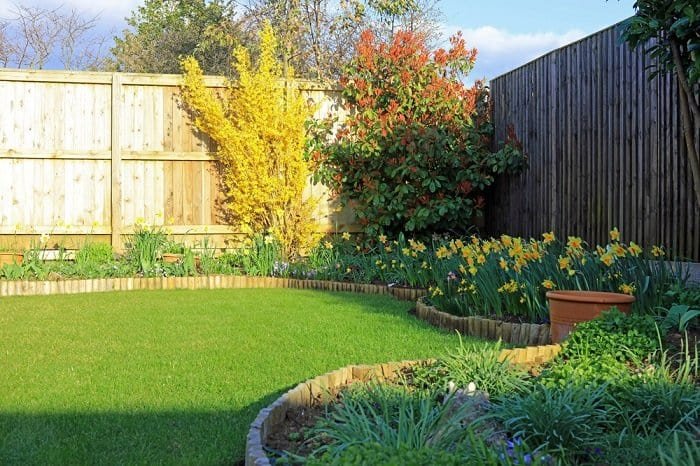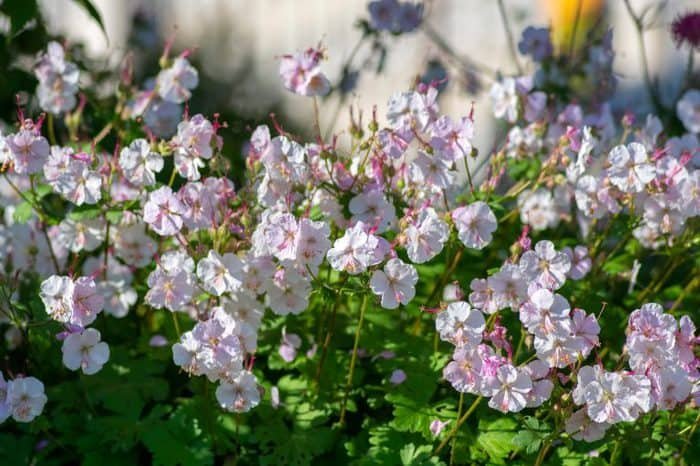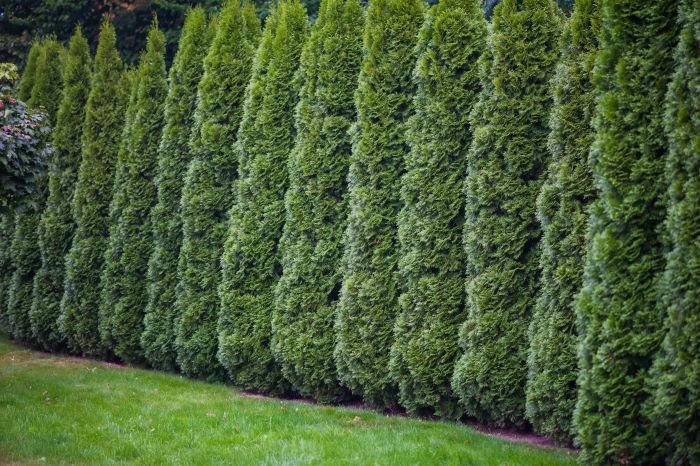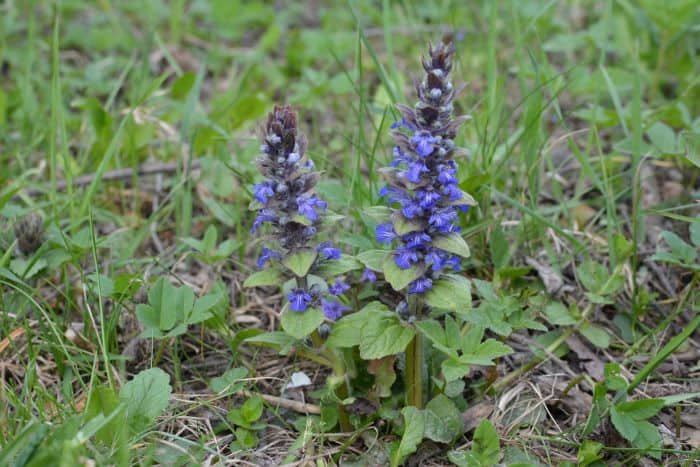What Can You Grow Against a Fence?
Growing something against your fence is a great way to improve the aesthetic of your yard, especially if your fence is a bit of an eyesore. Plants improve the overall appearance by adding color and texture, and there is a plant for every taste and need.
The best plants to grow against a fence are climbing plants, shrubs, evergreens, and tall-growing plants. These plants fill up the space well without requiring much attention or grooming. You can grow almost any plant against a fence with the right modifications.

Below is an extensive list of what you can grow against a fence that includes different ideas for how to grow them. Read on to find the right plants to grow against your fence line.
Be careful growing vines on a wooden fence. You can greatly affect how long your wooden fence lasts if the greenery or vines isn’t maintained.
Table of Contents
Decorative Plants You Can Grow Against Your Fence
If you are looking to grow plants against your fence for decoration you should look at colorful plants. Your most colorful options are going to be:
- Perennials
- Biennials
- Tulips
- Violas
- Pansies
The key with any shorter plants is pairing them with ornamental grass that will help draw the eye upward and blend into the fenceline.
If the idea of mixing textures does not appeal to you, you can use colorful ornamental grasses like little bluestem or purple millet to add both texture and color.
If you are working in a cornered area you should consider a plant that is fuller, like climbing roses. While these plants are also great for creating curtains they can be potted if you need to contain them.
Just ensure that you use a pot that will be large enough for their root system and to counter the weight of the plant.
Stacking Pots to Decorate
Another great way to grow plants along your fence is by stacking the pots to cover the vertical space. You can buy stackable pots if you want to be able to move them around and add onto your plants easily.
If you want something a bit more daring you can set up some tipsy pots against your fence using pots and rebar. These are great for adding variety to your yard, but they are also a great choice if you put some spillover plants like creeping zinnias or parrot’s beak.
Functional Plants You Can Grow Against Your Fence
If you are looking for something that looks nice and has extra benefits you should consider using your fenceline to grow food.
Growing edible items against your fence is an easy way to spruce up the area and use the space in your favor.
Vertical Vegetables
If you are looking for plants that grow more upright, your options include:
- Grapevines
- Tomatoes
- Squash
- Beans
- Peas
Cucumbers and melons also grow vertically, but they can take up quite a bit of space and add extra weight.
If you do not want the plants to grow directly on the fence you can use trellises or a specialized support system to help them grow upright. This is also a great option if you have flat fencing that is not optimized for climbing.
Chain link fence works great for climbing plants, and the extra greenery can close in an otherwise open fencing option. Just keep in mind that most vegetable plants are annual, so once they are out of season, the space will be bare and you will be cleaning off the leftover plant matter.
Hanging Plants
You can use your fencing to hang items like baskets or pots to grow any fruits and veggies that have spillover tendencies or less stringent growing conditions.
Lettuce, radishes, strawberries, and even peas grow well this way. You can use upside-down planters to grow some of the vine options we mentioned before, but you may want to opt for smaller varieties like dwarf tomatoes.
Shelves
Shelving is a great option if you do not want to add extra weight to your fence or you want to be able to change up your plants easily. You can also have a greater variety on your shelves, depending on their size.
Shelves are a popular pick for herbs because they allow you to bring the pots inside as needed and have enough space for a variety. Even if you only grow a few herbs you can fill your shelves with as many potted plants as you like.
Fruit Trees
You may be a bit thrown off by the idea of fitting fruit trees along a fence line, but a quick look into espaliered trees could change your mind.
Espalier is a method of pruning a tree or shrub that teaches it to grow flat against a wall (or, in your case, a fence). It can be tied back to the middle ages where it was used to grow fruit inside the castle walls.
Apple trees are the easiest to do this with, but you can espalier other trees that bear fruit like pears, peaches, and even pomegranates.
What Can You Grow Against a Fence for Privacy?
Greenery is a great way to increase the exclusivity of your yard. Some great barrier options include:
- Climbing plants
- Evergreens
- Bamboo
Of course, each of these options works well in different ways.
Climbing Plants
If you have fencing that you would like to fill in, like chain link or slatted fences, climbing plants can do so effectively. The best news? Climbing plants are fairly low maintenance when you are setting them up.
You do not need to guide them along, but you might want to watch and make sure they do not encroach on any areas you do not want covered.
Many varieties, like Chinese jasmine star climber or Virginia creeper, can provide a wall of color to cover the brown or gray, but seeing greenery can be enough to transform your space.
If you are working with a concrete wall or something of similar solidarity you should consider adding a trellis or some other grid form for the plants to climb. While there is some success with plants climbing such structures, you would have better success eliminating the guesswork.
Evergreens
Using evergreen trees like magnolias or pencil pines ensures that you will have coverage on your fence line year-round. If you opt for a deciduous tree there will always be a part of the year where your trees shake their leaves and leave the fence exposed.
If you would rather have shrubs to cover the bottom of the fence line you should still make sure they are of the evergreen variety. Some examples that are great for privacy are:
- False cypress
- American arborvitae
- Yew shrub
With proper trimming and maintenance evergreens can easily fill space and keep up with privacy year-round.
Bamboo
Bamboo is an amazing option for ensuring privacy against your fence. It tends to grow both tall and fast, which may be important to you.
There are two different types of bamboo, clumpers, and runners, and each has a different set of characteristics that might appeal to you.
Clumpers are popular because they tend to stay where you plant them, but that does not mean they are a lesser choice. In fact, one of the most popular types of bamboo for privacy fences is Seabreeze bamboo, a tightly clumping variety.
Runners spread easily, so it takes some management to ensure the bamboo does not take over your entire yard. This does mean that you can use less to start, so it might be a better option for larger yards or along a fence where you have no neighbors.
Conclusion
You can grow almost anything against your fence with a bit of creativity. If you want to grow something that people have already tried with success you can stick to climbing plants or tall-growing shrubs. Either way, adding greenery to your fence will change the feel of your yard, usually for the better.
When it comes to neighbors though things can get complicated. Find out if your neighbors can make you pay for a fence!






